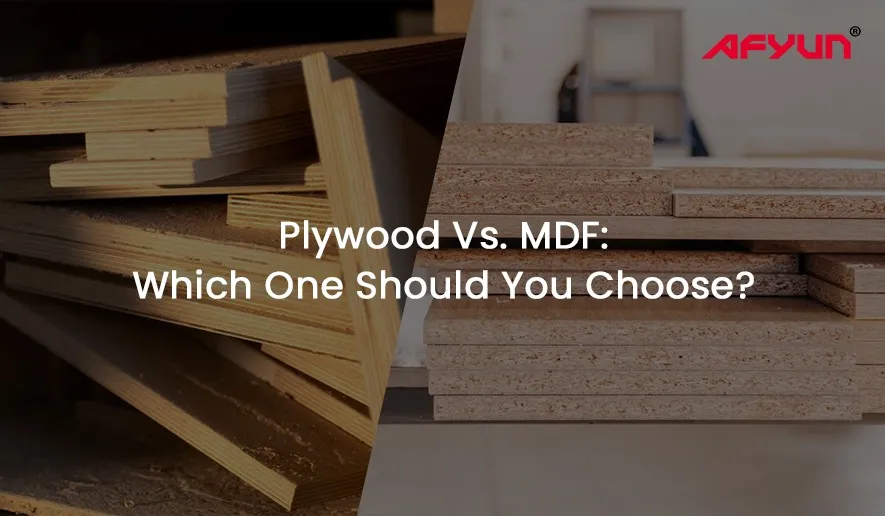Previously, we have compared plywood with many other materials like Blockboard, HDHMR and more.
Now, here we are going to compare plywood and MDF (Medium-Density Fiberboard), which is another pivotal material in woodworking.
While both possess unique attributes, they cater to distinct applications.
Let’s take a look.
Difference Between MDF And Plywood
| Factor | Plywood | MDF |
|---|---|---|
| Composition | Plywood is crafted from layers of thin wood glued together, resulting in a robust and versatile material. | MDF, on the other hand, comprises wood fibres bonded with adhesive, providing a smooth, uniform surface. |
| Strength and Durability | Plywood boasts impressive durability, less prone to sagging or warping under heavy loads. | MDF, while sturdy, is comparatively less durable, making it more susceptible to sagging over time. |
| Weight | Plywood is notably heavier due to its layered construction, adding substantial weight to projects. | MDF, being denser, is relatively lighter, making it advantageous for applications where weight is a concern. |
| Surface Smoothness | Plywood offers a reasonably smooth surface, suitable for a variety of finishes, including paint, stain, or veneer. | MDF provides a smoother surface, ultimately providing a flawless finish, especially in painting. |
| Cost | Generally, plywood tends to be more expensive due to the manufacturing process and quality of the raw material. | MDF is comparatively affordable, making it a good option if you have budget constraints. |
| Environmental Impact | Low impact on the environment since manufacturers source it from sustainable wood forests. | MDF often comprises recycled wood fibres, making it eco-friendly. |
| Moisture Resistance | Plywood exhibits resistance to moisture damage, making it suitable for applications where exposure to humidity or water is likely. | MDF, however, is more susceptible to swelling and damage when exposed to moisture, limiting its use in damp environments. |
| Machinability | Plywood can be easily cut, shaped, and worked with standard woodworking tools, providing flexibility in design. | MDF can be machined, but it requires special tools due to its density, demanding a more careful approach during shaping. |
| Screw Holding Capacity | Plywood exhibits good screw holding capability, making it reliable for applications that require sturdy joints. | MDF, while able to hold screws, has a lower capacity compared to plywood, necessitating careful planning and reinforcement for structural integrity. |
| Edging and Finish | Plywood edges can sometimes splinter, requiring extra care and techniques for a polished finish. | MDF edges are notably smooth, allowing for a clean, seamless finish that adheres well to various treatments. |
| Applications | Plywood caters to a wide range of applications, including furniture, cabinetry, flooring, outdoor applications and structural elements. | MDF excels in indoor furniture and cabinetry, where its smooth surface and cost-effectiveness are valuable assets. |
| Environmental Sensitivity | Plywood may emit trace amounts of formaldehyde and Volatile Organic Compounds (VOCs) depending on the adhesive used, requiring proper ventilation during installation. | MDF typically has low emissions, contributing to a healthier indoor environment, though it’s advisable to use proper safety measures when working with any wood material. |
Also read: Engineered Wood vs Plywood
Conclusion
The choice between plywood and MDF relies on the unique demands of your project. If you prioritize durability and strength, plywood emerges as the frontrunner. On the other hand, if a flawless finish and budget considerations are paramount, MDF may hold the advantage.
So, understand your requirements first, then go for the right material.
If you want plywood, make sure you reach out to us. At Afyun, we provide a wide range of plywood that cater to different needs. Check it out now.
